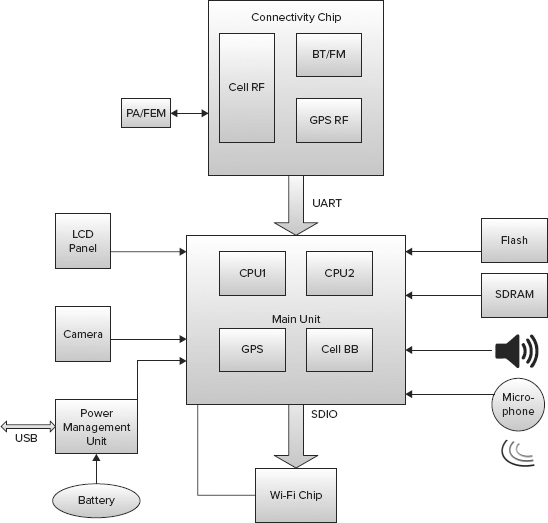Appendix A
An Introduction to Smartphone Chipset
Smartphones are usually built on top of a silicon chipset (also known as System-On-Chip, or SOC) that serves as the foundation of the device hardware. Smartphone Original Equipment Manufacturers (OEMs) as system integrators can customize and configure the chipset, as well as add additional components to connect to it. For a specific chipset product, the chipset vendor usually provides a reference software platform, which can be Android, WP7, or some other operating systems. OEMs use the reference software platform as a foundation to build specific software for a device that uses the chipset and other components. Major chipset vendors are Qualcomm, Texas Instruments, Samsung, ST-Ericsson, and so on. As discussed in the “An Overview of Smartphone Hardware” section of Chapter 10, smartphone chipsets are predominantly ARM-based.
A smartphone chipset provides a core set of functions ranging from cellular communication, to Wi-Fi and Bluetooth communication, to general computing, to power management, to memory and storage interface, and to peripheral interfaces. This appendix aims at providing you a general overview of smartphone chipsets.
Figure A-1 shows an example of a high-level block diagram of a GSM (Global System for Mobile) smartphone chipset.
FIGURE A-1: A smartphone chipset block diagram

Despite the fact that smartphone chipsets ...

